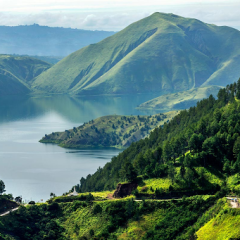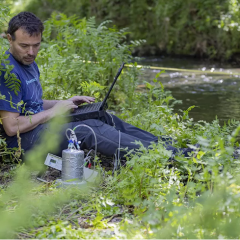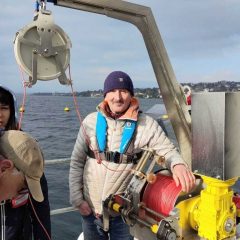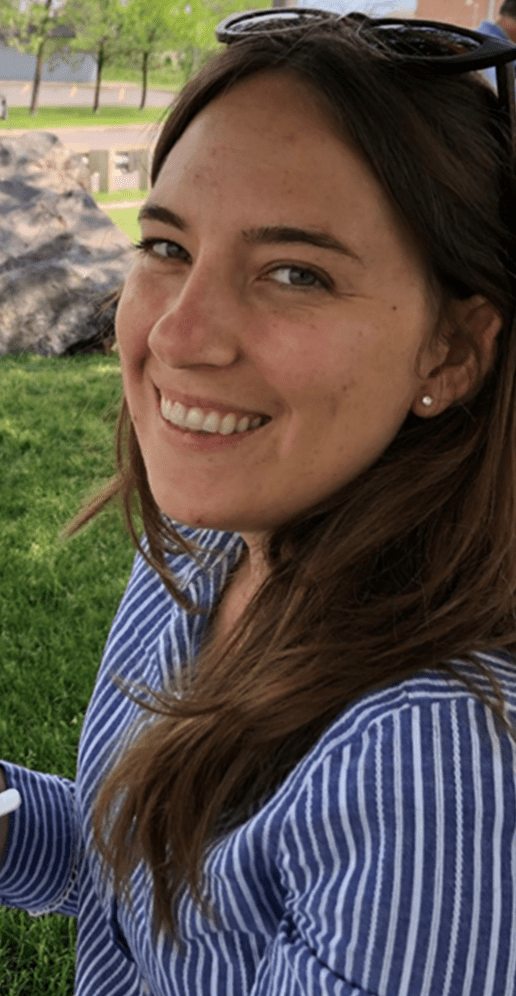
By Kait Reinl
When we think about cyanobacterial blooms, also known as Harmful Algal Blooms (HABs) or cyanoHABs, we generally conjure up images of small lakes and ponds surrounded by cities or farms with bathwater temperatures, maybe even a few dead fish. As people have become more aware of these blooms, the alarm has been raised over their potential for toxicity, and reports of pets dying after an afternoon playing at the beach or kids getting ill from accidentally drinking some of the water.
What we don’t picture when someone brings up HABs is the picturesque, crystal-clear waters of the largest lake in the world – Lake Superior (okay, okay by surface area, but come on, just let me just have this one, it’s a really big lake). Lake Superior had its first confirmed cyanobacterial bloom in 2012 following a 500-1000 year return probability flood event and people thought “Wow. That was crazy, but probably a fluke, an exception.” Over the following years, reports of smaller, patchy blooms were being reported in the southwestern arm of the Lake along the northern Wisconsin border, and then Bam! In 2018, following another big flood event was another enormous cyanobacterial bloom that stretched hundreds of kilometers along the southwestern shore. The research and management community were completely caught off guard – how could this be happening in Lake Superior, where there is very little development and nutrient inputs? And as anyone who has swum in Superior in the peak of summer knows, it’s still pretty darn cold. This went against the common knowledge about favorable conditions for blooms (warm water and high nutrient inputs), and we were all scrambling to understand what could be causing this and what could be done to prevent it from happening in the future.
Fast-forward to 2019 and the GLEON 21 All Hands’ Meeting in Huntsville, ON, Canada. It was my first GLEON meeting. I was a PhD student and didn’t know a single person there. I was warmly welcomed by everyone and quickly gravitated toward the Cyanobacteria Working Group. We were all giving casual updates on what we were doing and what we were interested in, and I shared my story about what was happening in Lake Superior. To my surprise, there were a few others who had seen something similar in low-nutrient (oligotrophic) lakes. At the end of that day, I was approached by Justin Brookes, Professor at Adelaide University and long-time GLEON member, with this idea to write a review on these exceptional bloom events. He asked if I might be interested in championing a project, and I happily accepted it. During that GLEON meeting, a group of people interested in this topic formed a team, and we continued to work together on this project following the meeting. The collaboration eventually turned into the paper “Blooms in oligotrophic systems: shifting the high-nutrient paradigm” and became a top cited paper in Freshwater Biology in 2021.
Shortly after we wrapped up this work, we had a virtual GLEON meeting in the fall of 2020. I had a “water-cooler” conversation with Ted Harris, Assistant Research Professor at Kansas Biological Survey and GLEON member, about posts on Twitter showing blooms during snow and ice conditions in lakes. We started discussing the sentinel paper “Blooms like it hot” and that maybe this wasn’t the whole story when it came to blooms, and so another paper was born – this time bucking the assumption that HABs only happen when temperatures are “hot.” This current evidence paper was exciting for two reasons: 1) it’s an uncommon perspective, which generates renewed discussion about how we think about ecology, and again focusing on exceptions to the rule, and 2) this was a massive collaboration with 27 authors from 3 continents, 11 countries and 27 different institutions including academics, researchers, managers, and others. While the topic of blooms in unexpected situations on its own is exciting, I think that demonstrating the ability of people to work together across so many different boundaries – geographic, institutional, cultural, political – is so important to highlight, especially given the daily reminders of so much difficulty to come together and accomplish a common goal.
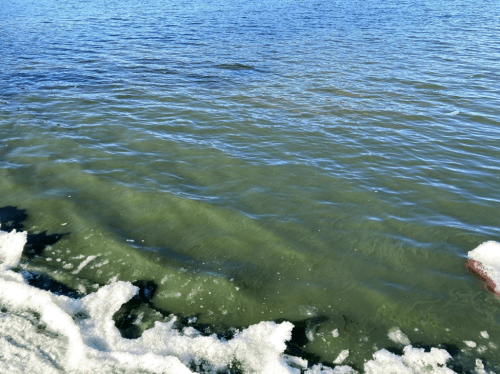
These experiences have been so important in shaping who I am now as a researcher and how I have fully embraced working collaboratively. Being given the opportunity to lead a group of people from all levels of seniority and backgrounds as a student was an experience unique to GLEON and one of the reasons that I promote GLEON so much, especially for students. The exceptional culture of GLEON has allowed these interesting and novel ideas to become a reality and be shared with the broader community. The GLEON model for community and collaboration can be a template for other networks who hope to foster a true sense of community and engage in exceptional collaborations.
About the Author
Dr. Kaitlin (Kait) Reinl is a GLEON member and the Research Coordinator at the Lake Superior National Estuarine Research Reserve in Superior, WI. She is a limnologist with a broad focus on how the synergistic effects of climate and watershed influence impact inland water quality.
